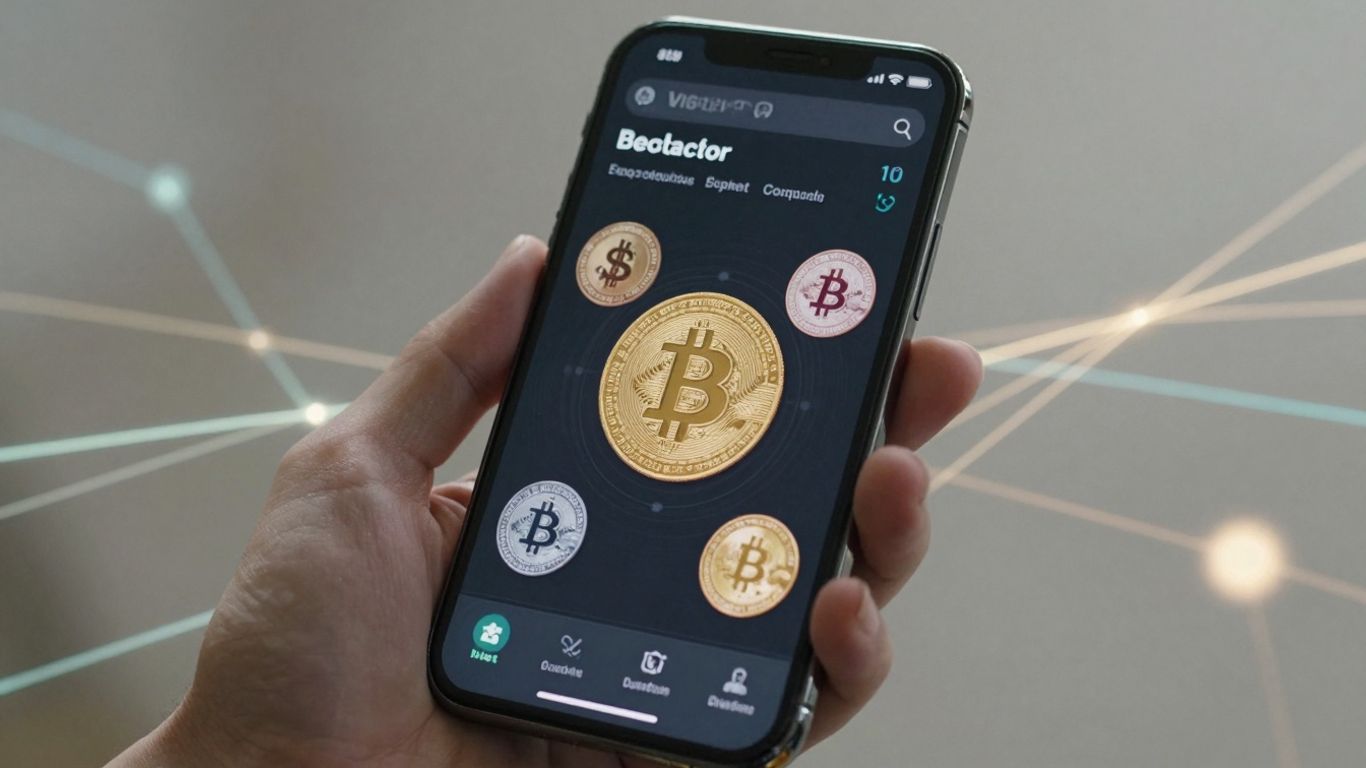[ newsletter ]
Stay ahead of Web3 threats—subscribe to our newsletter for the latest in blockchain security insights and updates.
Thank you! Your submission has been received!
Oops! Something went wrong. Please try again.
Master smart contracts with this comprehensive tutorial for beginners. Learn concepts, development, use cases, and deployment. Start your smart contract journey today!





Getting into web3 can feel a bit much at first, right? It reminds me of when the internet first became a thing, and we went from simple chat rooms to scrolling through endless feeds. If you're curious about smart contracts, which are kind of the engine behind a lot of this new tech, you've landed in the right spot. This smart contract tutorial is here to break down what they are, why they matter, and how you can even start building your own. No need to be a coding wizard to get started.
Alright, let's get down to the nitty-gritty of what smart contracts actually are. Forget the fancy tech talk for a second. At its heart, a smart contract is just a digital agreement. But here's the kicker: it's written in code and lives on a blockchain. This means it can automatically do things when certain conditions are met, no middleman needed.
Think of it like a super-powered vending machine. You put in your money (crypto), select your item (digital asset or service), and if everything checks out, the machine gives you your snack. A smart contract works similarly. It has rules programmed into it. When those rules are followed – say, you send the correct amount of cryptocurrency – the contract automatically executes the next step, like releasing a digital token or granting access to something. This automation is what makes them so powerful. It removes the need for lawyers, banks, or anyone else to oversee the deal.
The idea isn't actually brand new. Back in the mid-90s, a computer scientist named Nick Szabo first talked about these kinds of self-executing agreements. He imagined them as a way to make contracts more reliable than paper ones. Of course, the technology wasn't quite there yet. It took the rise of blockchain technology, especially with Bitcoin and later Ethereum, for Szabo's vision to really start taking shape. Ethereum, in particular, was built with the idea of running these kinds of coded agreements right on its network.
Let's really break down that vending machine idea because it's a good way to get your head around it. With a regular vending machine:
Now, a smart contract is like that, but digital and on a blockchain:
No one has to manually check if Alice sent the money or if the token is available. The code just handles it. It's all about predefined rules leading to automatic actions.
The beauty of smart contracts lies in their ability to remove trust from the equation. Instead of relying on a person or company to do the right thing, you rely on the code and the blockchain's security to make sure the agreement is honored.
Alright, so you've got a basic idea of what smart contracts are. Now, let's get into what actually makes them tick. Think of it like building with LEGOs; you need the right pieces and a way to put them together. For smart contracts, these pieces are variables and functions, and they're put together using specific programming concepts.
Variables are basically where your smart contract keeps its information. They're like little boxes that hold data, and this data stays put on the blockchain. When you create a variable, you're telling the contract to reserve a spot in its memory to store something specific. This could be a number, some text, or even someone's wallet address.
Here's a quick look at how you might declare some variables in Solidity, the most common language for smart contracts:
uint256 public favoriteNumber; - This creates a box to store a whole number. uint256 means it's an unsigned integer (no negative numbers) that can be quite large. public means we can check its value from outside the contract.string public favoriteText; - This box is for text.address public owner; - This one's for storing a blockchain address, like a wallet.These variables are the contract's memory, holding the state of whatever it's designed to do.
If variables are the memory, then functions are the actions. They're the bits of code that do things. You call a function, and it performs a specific task within the smart contract. This could be anything from sending money to checking a balance or updating a variable.
Let's look at a simple bank contract example:
contract SimpleBank { mapping(address => uint256) public balances; // Stores balances for each address // This function lets people deposit money function deposit() public payable { balances[msg.sender] += msg.value; } // This function lets people check their balance function getBalance() public view returns (uint256) { return balances[msg.sender]; }}In this example, deposit() and getBalance() are functions. The deposit() function takes cryptocurrency sent to the contract and adds it to the sender's balance. The getBalance() function just returns the current balance for the person asking. Functions are how users and other contracts interact with the smart contract's logic.
Beyond just variables and functions, there are other important ideas you'll run into when working with smart contracts. Understanding these makes writing and using contracts much easier.
uint, int), booleans (bool for true/false), strings (string), and addresses (address). Choosing the right type saves space and prevents errors.if/else statements and for loops help your contract do different things based on certain conditions or repeat actions.Smart contracts are essentially programs that run on a blockchain. They need clear instructions to know what to do, how to store information, and how to react to different situations. Getting these basic building blocks right is the first step to creating reliable and useful decentralized applications.
Think of it this way: variables are the nouns, functions are the verbs, and the programming concepts are the grammar that holds it all together. Without them, you just have a jumble of words that don't make sense.
So, why bother with smart contracts? What makes them so special compared to the old way of doing things? Well, it turns out there are quite a few good reasons. Think of them as digital agreements that run themselves, and that self-running aspect brings some pretty neat perks.
This is a big one. Smart contracts can automate a ton of tasks that usually require people to get involved. Imagine a contract that automatically releases payment once a delivery is confirmed, or one that automatically renews a subscription if you don't cancel. This means fewer hands touching the process, which usually speeds things up considerably. No more waiting around for someone to approve a step or manually move things along. It's like having a super-efficient assistant who never sleeps.
The real magic here is taking out the middleman. When you remove the need for a third party to verify or process something, you inherently make the process quicker and cheaper. It's a direct line from A to B, powered by code.
Smart contracts live on a blockchain. If you're not familiar, blockchains are like shared digital ledgers that everyone involved can see. This means the terms of the contract and the transactions that happen because of it are out in the open. Anyone can look at the code (if it's public) and see how it's supposed to work. Plus, once something is on the blockchain, it's pretty much set in stone. You can't go back and change it later without everyone noticing, which is a huge deal for trust.
Because smart contracts use cryptography and are stored on a decentralized network, they're generally quite secure. The code itself is the enforcer, and the blockchain makes it hard for anyone to cheat the system. Think about trying to change a record on a shared spreadsheet that thousands of people are looking at simultaneously – it's not easy. This makes them a much safer option for many types of agreements compared to traditional paper contracts that can be lost, forged, or disputed more easily.

Okay, so we've talked about what smart contracts are and how they work. Now, let's get into where you're actually seeing them pop up. It's not just theoretical stuff; people are using these things for real, and it's changing how a bunch of industries operate.
This is probably the biggest area where smart contracts are making waves right now. Think about all the traditional financial stuff – banks, lenders, exchanges. DeFi, or Decentralized Finance, aims to rebuild all of that, but without the middlemen, using smart contracts as the engine. You can borrow, lend, trade, and even earn interest on your crypto, all through code that runs automatically. It's pretty wild to think about how much value is locked up in these systems already. For instance, platforms like Uniswap use smart contracts to let people trade cryptocurrencies directly with each other, managing all the liquidity and trades automatically. It's a whole new financial world being built on code.
Remember waiting days for an international money transfer? Smart contracts can make that a thing of the past. They can automate the movement of funds between parties, whether it's paying a freelancer overseas or settling invoices. This means faster transactions, lower fees because you're cutting out the banks, and it can even help people who don't have access to traditional banking services. Imagine a designer in one country getting paid instantly by a client in another, all thanks to a smart contract that releases the funds once the work is approved. It's about making payments quicker and more accessible for everyone.
Getting a loan or filing an insurance claim can be a real headache, right? Lots of paperwork, waiting for approvals, and hoping for the best. Smart contracts are stepping in to simplify this. For loans, they can automate the entire process, from disbursing funds to managing collateral and even processing repayments. In insurance, think about claims. If a flight is delayed, a smart contract could automatically trigger a payout to the policyholder based on verified flight data, without needing to file a claim at all. This kind of automation cuts down on administrative costs and speeds things up considerably.
This is a really interesting one. Smart contracts are playing a big role in the rise of digital assets, especially NFTs (Non-Fungible Tokens). They handle the creation, ownership, and trading of unique digital items, like art or collectibles. When you buy an NFT, a smart contract records that you own it and manages any future sales. Beyond NFTs, they can also be used for things like royalty payments, ensuring artists and creators get paid automatically whenever their work is used or resold. It's a way to bring more fairness and transparency to the creative industries. You can even create your own NFTs on platforms like OpenSea with relative ease.
The core idea across all these use cases is removing friction. Whether it's financial transactions, legal agreements, or digital ownership, smart contracts automate processes that used to require trust in a third party or a lot of manual work. This leads to more efficiency, less chance for errors, and often, lower costs.
Alright, so you've been learning about what smart contracts are and why they're pretty neat. Now comes the fun part: actually making one! It might sound like a big deal, but honestly, it's more accessible than you might think. We'll walk through the basic structure, how to get it onto a test network, and what tools can make your life easier.
Think of Solidity, the main language for writing smart contracts on Ethereum, like any other programming language you might have used. It has rules for how you write things – that's syntax. A contract itself is basically a collection of code that lives on the blockchain. It's made up of a few key pieces:
Here's a super simple example of what a Solidity contract might look like:
// SPDX-License-Identifier: MITpragma solidity ^0.8.0;contract SimpleStorage { uint256 private storedData; function set(uint256 x) public { storedData = x; } function get() public view returns (uint256) { return storedData; }}This contract just stores a number. You can set a new number, and you can get the current number. Pretty straightforward, right? Learning the syntax is key to making sure the Ethereum Virtual Machine (EVM) understands your instructions correctly.
Before you even think about putting your contract on the main Ethereum network (where real money is involved), you absolutely have to test it. That's where testnets come in. They're like practice versions of the main blockchain, using fake Ether. This lets you mess around, find bugs, and fix them without any financial risk. It's a really important step, and honestly, you should always do it.
Some popular testnets include:
Here’s a general idea of how you’d deploy:
Deploying on a testnet is your safety net. It's where you catch mistakes before they become expensive problems on the mainnet. Treat it as a mandatory part of the development process.
While you can get started with just Remix, as your contracts get more complex, you'll want more powerful tools. These help you write, test, and manage your projects more effectively.
Choosing the right tools can make a big difference in how smoothly your development process goes. For beginners, starting with Remix is great, but exploring Solidity and smart contracts with a framework like Hardhat will really help you build more robust applications down the line.

So, you've written your smart contract. That's awesome! But before you even think about putting it out into the wild, you absolutely have to test it. Seriously, this is not the part to skip. Think of it like building a house – you wouldn't just slap walls up and hope for the best, right? You need to check if the foundation is solid, if the plumbing works, and if the roof doesn't leak. Smart contracts are no different, except the stakes can be way higher. Bugs in smart contracts can lead to lost funds, so testing is your best friend.
Why bother with all this testing fuss? Well, for starters, smart contracts are often dealing with real money. Once deployed on a blockchain, they're pretty much set in stone. You can't just patch a bug like you would with a regular app. This immutability is a feature, but it also means mistakes are permanent and potentially very costly. Testing helps you catch those mistakes before they become expensive problems. It's about making sure your contract does exactly what you intend it to do, under all sorts of conditions, and doesn't have any weird loopholes that someone could exploit.
This is where tools like Hardhat come in handy. Hardhat is basically a development environment that makes building and testing Ethereum applications, including smart contracts, a lot smoother. One of its biggest perks is that it lets you spin up a local blockchain on your computer. This means you can run tests super fast, way faster than if you were trying to test on a live network. Plus, you don't have to spend real money on gas fees for every little test. You get a controlled environment where you can reset things, try different scenarios, and generally experiment without any real-world consequences.
Hardhat also plays nicely with other popular testing libraries like Mocha and Chai. This means you can write your tests using familiar JavaScript syntax and structure. It's like having a whole toolkit designed to make your life easier when it comes to verifying your code.
Testing on a local blockchain, like the one Hardhat provides, has some pretty sweet advantages:
When you're writing tests, think about all the different ways someone might interact with your contract. What happens if they send zero Ether? What if they try to withdraw more than they have? What if multiple people try to do the same thing at the exact same time? Cover all those edge cases. It's better to find out about a problem in your local test environment than on the mainnet.
So, we've talked a lot about how smart contracts work and what they can do. But before you jump headfirst into building the next big thing, there are a couple of important things to think about: the legal side of things and what the future might hold.
This is where things can get a bit tricky. Smart contracts, at their core, are just code. But when that code automates agreements that have real-world consequences, like transferring money or property, the law steps in. Different places have different rules about whether these digital agreements are actually binding. For instance, some states in the US have passed laws recognizing smart contracts as legal. It's super important to know the rules where you and the people you're contracting with are located. You also have to think about things like data privacy laws and financial regulations. What happens if something goes wrong? Your contract needs a plan for how to sort out disagreements and fix mistakes.
The legal landscape for smart contracts is still pretty new and changing fast. What's acceptable today might be different next year. Staying on top of these changes is key if you want your contracts to be enforceable and avoid trouble.
Governments and regulatory bodies are still figuring out how to deal with blockchain and smart contracts. This means the rules can shift. Here’s a quick look at what’s happening:
Looking ahead, smart contracts are set to get even more powerful and integrated into our lives. Here are some exciting possibilities:
The potential for smart contracts to automate processes, increase transparency, and reduce costs across almost every industry is huge. As the technology matures and the legal frameworks catch up, we'll likely see them become a standard part of how we do business and interact online.
So, we've gone through what smart contracts are, how they work, and why they're becoming a big deal. It might seem like a lot at first, but remember, every big thing starts small. You've learned the basics, seen some cool examples, and hopefully feel ready to explore more. Don't be afraid to play around with some test code or read up on more advanced topics. The world of smart contracts is still growing, and there's plenty of room for new people to jump in and make their mark. Keep learning, keep building, and who knows what you'll create next.
Think of a smart contract like a digital vending machine. It's a computer program stored on a blockchain that automatically carries out the terms of an agreement when certain conditions are met. For example, if you pay for a digital item, the smart contract automatically sends it to you, just like a vending machine gives you a snack when you put in the right amount of money.
Smart contracts are built on blockchain technology, which uses strong coding and is spread across many computers. This makes them very hard to tamper with or hack. Once a smart contract is set up and running, its rules are followed exactly as written, and nobody can change them easily, which helps prevent cheating.
Smart contracts are used in many ways! They power things like digital money systems (DeFi), make payments faster and cheaper, help with loans and insurance by automating claims, and are even used in games and digital art to manage ownership and sales.
Yes, smart contracts can have mistakes, but usually, it's in the code written by the programmer, not the technology itself. If the code has a bug or isn't written carefully, it could lead to problems. That's why testing smart contracts very thoroughly before they are used is super important.
Many different blockchains can run smart contracts! The most famous one is Ethereum, but others like Binance Smart Chain, Solana, Cardano, and Avalanche also support them. Each blockchain might have its own way of building and using smart contracts.
To begin, you should learn the basics of blockchain and then pick a platform like Ethereum. You'll need to learn a programming language for smart contracts, like Solidity. After that, set up your tools, write some simple contracts, and practice testing them on a practice network before trying anything with real money.


